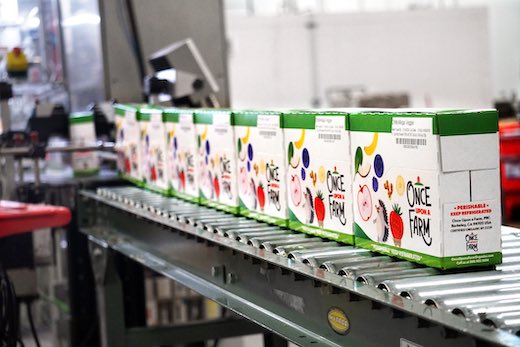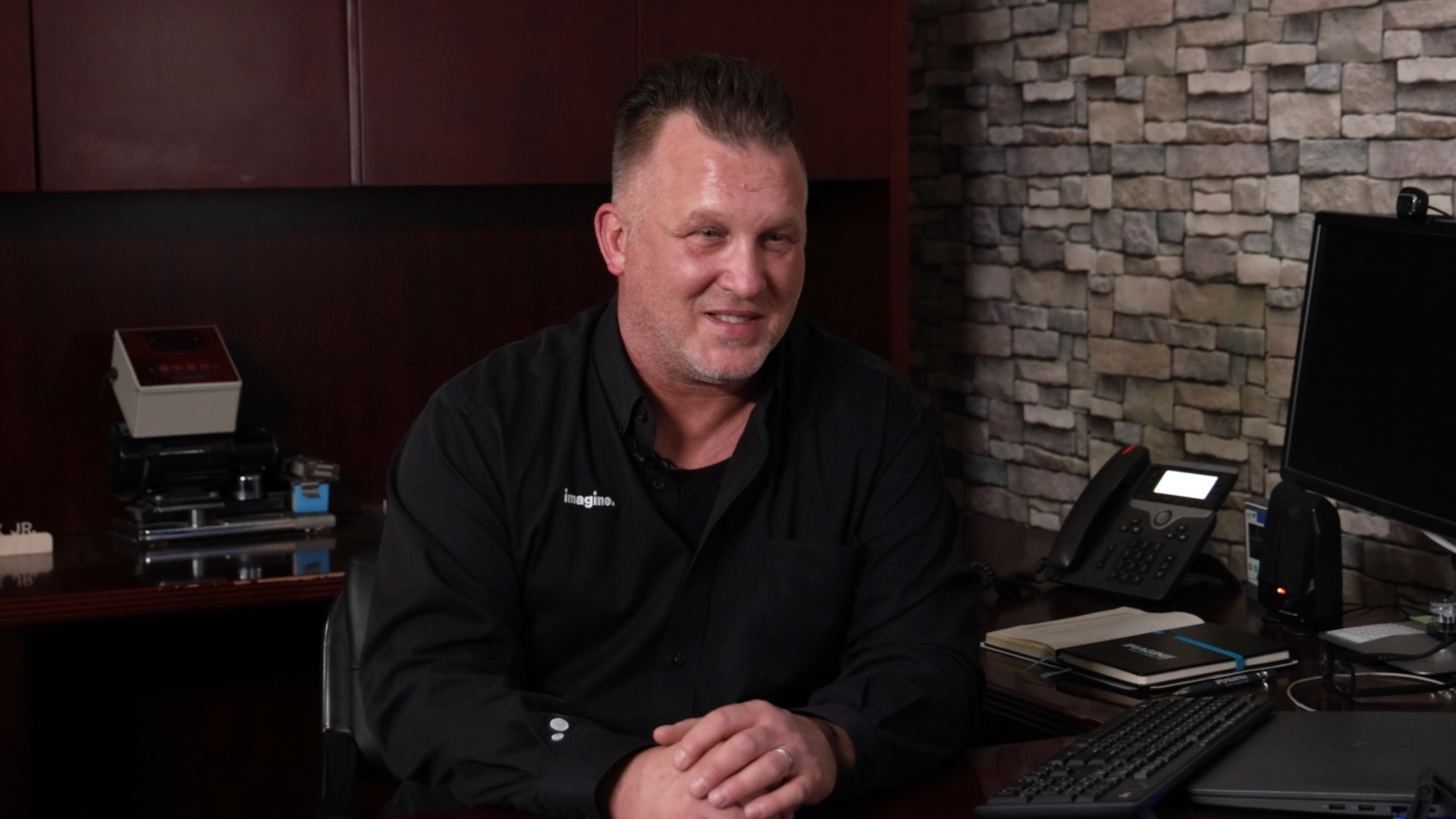
Eagan, MN. – Organic snack food company Once Upon a Farm has come a long way in a short time to establish its brand and prosper. In just nine years, the privately owned California company has achieved one ambitious milestone after another and is preparing for its next phase of success.
Since 2018, Once Upon a Farm has nearly doubled the number of outlets that sell its nutritious baby food and snacks for children. In 2020, revenues reached $20 million. Looking ahead to satisfy future demand, the company last February installed automated SOMIC Packaging 424 W3 wraparound case packing systems at two of its co-packing providers’ facilities in Milwaukee and Orange County, Calif.
A flexible solution to help grow the business
Once Upon a Farm was founded in 2015 by Cassandra Curtis and a group of entrepreneurs looking to modernize the standards of organic baby food. They answered the call from a generation of newer parents asking for healthier food options by using cold pressure, High Pressure Processing (HPP) technology to preserve the original nutrients without using additives or heat.
With CEO John Foraker and actress, philanthropist, and entrepreneur Jennifer Garner on board as co-founders and chief brand officer, the company grew distribution rapidly across most channels and developed multiple experimental product lines to accelerate growth. Today, they employ over 100 full-time people and rely on several co-packers throughout the United States to service their national retail partners and consumer base.
“Once Upon a Farm has grown exponentially since our inception,” said Douglas Blake, the company’s Director of Co-Packer Engineering. “In 2018, we expanded nationally and reached more than 8,500 retail outlets. We are now in over 16,000 retail operations and growing every day.”
Prior to purchasing the pair of SOMIC case packing systems, Once Upon a Farm’s co-packers used manual labor to handle the products. They currently use several workers on the assembly line for each shift, but the change to a faster and more consistent method began with a visit to a packaging trade show in late 2022.
“We heard about SOMIC and the 424 machine at PACK EXPO, and I had prior interaction with Stacy Schmeiser, their west coast regional sales manager,” recalled Blake. The preeminent packaging event, which usually attracts over 50,000 professionals, returns this year to Chicago’s McCormick Place. SOMIC Packaging will be exhibiting in booth N-6148 from November 3-6.
“We were impressed by the machine’s capabilities and knew there was an opportunity to streamline our production process,” added Blake. “We considered two other companies, but SOMIC was the clear winner because of its accuracy, capabilities with different boxes and overall customer service. Stacy’s persistence and tactful style of communication is a large reason why SOMIC earned our business. He was patient, strategic, straightforward, and knew SOMIC would deliver what we needed.”
Co-Packing partner experiences Productivity improvements
American Pasteurization Company (APC) in Milwaukee is one of the co-packers that runs the 424 W3 machines. Greg Zaja, APC’s vice president of Business Development, said they first heard of SOMIC through contacts in the food industry.
“The decision to invest in the machinery was ultimately made by Once Upon a Farm, and the functionality of the machine itself was key. SOMIC’s specifications were a good match for the production needs, and the responses from companies already using their equipment were all positive,” said Zaja, a 20-year veteran at APC. He further explained there have been several advantages since the 424 W3 was installed in February.
“Our machine replaced quite a few extra sets of hands we needed to have on the assembly line. We also had to replace an older piece of equipment that we were getting by with but wasn’t intended to handle the volume level we currently do,” he noted. “The SOMIC case packer allows for greater hourly throughput with a far reduced risk of human error.”
Each shift, Once Upon a Farm product is placed on the assembly conveyor belt by two or three workers who feed the compact, end-of-line packaging machine. An operator monitors the line in the 44-degree production area, and another individual stacks each boxed finished product on a skid. The speed and reliability of the high-performance machine, Zaja says, is boosting output and resulting in a positive, across-the-board outcome.
“Speed and downtime are always key considerations. Production efficiency, reducing delays – these issues are always at the forefront,” he acknowledged.
“The machine’s reliability and prompt service from SOMIC when there is an issue has minimized downtime, allowing us to maintain a consistent production schedule. Keeping costs in check helps us offer our customers the most competitive pricing in the industry. Reducing the risk of delays or cost overruns helps our customers meet all their objectives, which is our number one priority.”
Under the leadership of CEO Justin Segel, APC is doing brisk business in Milwaukee. The company employs approximately 300 people at a 200,000 square-foot plant located about seven miles west of downtown. Demand for Once Upon a Farm product was so strong by the end of August, the company added a third shift that runs at least five days a week.
Adaptable equipment to handle future demand
Once Upon a Farm’s refrigerated pouches and frozen plant-rich meals are prepared at their co-packers facility in Milwaukee. Two very different products, Blake said only the spouted pouches are run on the SOMIC machine. Since they are processed with the HPP technology, the combination of speed and efficiency is of the utmost importance.
“Our product has a short shelf life because we deliver a fresh, nutritious product to our consumers. Getting everything through the system quickly and safely is extremely important,” noted Blake, who is happy with how everything has proceeded.
“SOMIC’s ability to run the type of box we wanted for our product was a key factor. Their team was more than willing to work with us to create a solution type that answered all our needs. They also had prior experience with chipboards in a size and similar thickness we were looking to implement,” he said, indicating the size varies from 3.2 to 4 ounces and the product is packed eight to a box.
‘This gave us the confidence they would be able to execute the project successfully,” continued Blake. “The chipboard itself was critical to getting the cost reductions we needed to make the project viable. Box type, design and size, and labor reduction all played a part in the decision-making process.”
Blake said he is impressed with the early results of the SOMIC machines and is looking to finish the year on a high note.
“Since we put the equipment into production, we have tripled our efficiency while using the same number of people. Currently, our goal is to pack up to 1.2 million pouches weekly on the SOMIC machines at each facility to accommodate demand for our growing business.”



